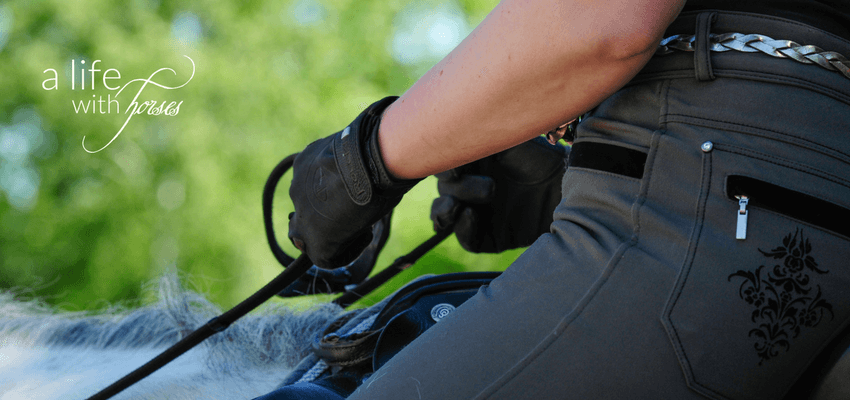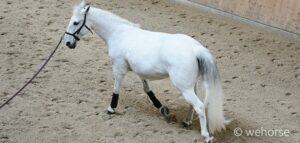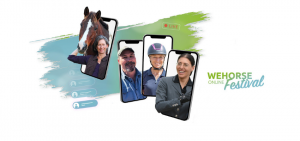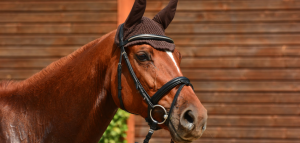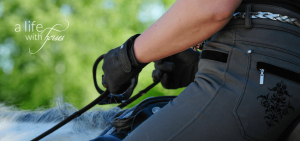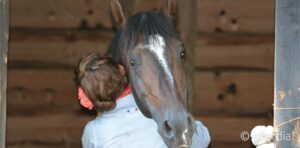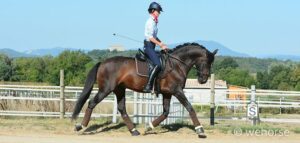The ability to ride your horse with soft, quiet hands is the first step towards developing an even, elastic contact to the bit and, therefore, with the mouth of your horse.
Between the need to guide your horse precisely through the exercises and controlling your own seat and legs, keeping your hands steady and in front of you can be a challenging task.
Summary
Why is the position of your hands so important?
For your hands to find an appropriate position while riding your horse, it is important for your whole body to be in line. Your hands should be an extension of your lower arms. It’s important for you to carry your hands and close your fingers, enabling you to feel the horse’s mouth and communicate through the rein aids. Your wrist should remain straight with slightly bent thumbs on top, securing the rein against the index finger.
Here are three things you should keep in mind:
- Your body should be relaxed: being able to lightly follow your horse’s movement with your seat is the first step towards controlling your arms and hands. When sitting correctly, the movement is absorbed by your seat, allowing the rest of your body to move independently and, therefore, your hands to stay still.
- Keep your wrists supple: this allows the transmission of the smallest of signals to your horse through your hands. Your wrists should stay straight with your thumbs on top, with a straight line being formed from the elbows to the bit. Dr. Britta Schöffmann demonstrates the correct hand position and explains what happens when your wrists are twisted.
- Follow the mouth of your horse: the ultimate goal of the correct hand position is to develop a soft but steady contact to the bit. Your hands should always be in front of you enabling the horse to work from the back to the front.
What are some common mistakes?
1 – Soft hands doesn’t mean not having any contact!
Wanting to ride with soft hands is great but having a steady contact to the mouth of your horse is as important for your training to be successful and for your horse to work from the back to the front.
The ability to ride your horse with soft, quiet hands is the first step towards developing an even and elastic contact to the bit and, therefore, to the mouth of your horse. Later on it will be crucial for the training of impulsion, your horse will only be able to swing through the back with active hind legs if the energy, directed to the front, is guided by the appropriate contact.
A good exercise is Ingrid Klimke‘s rein-bridge can help you two-fold; firstly by providing a steady contact and secondly, helping you develop a feel for the correct hand position. By doing so, you can progressively introduce a consistent contact to the mouth of your horse.
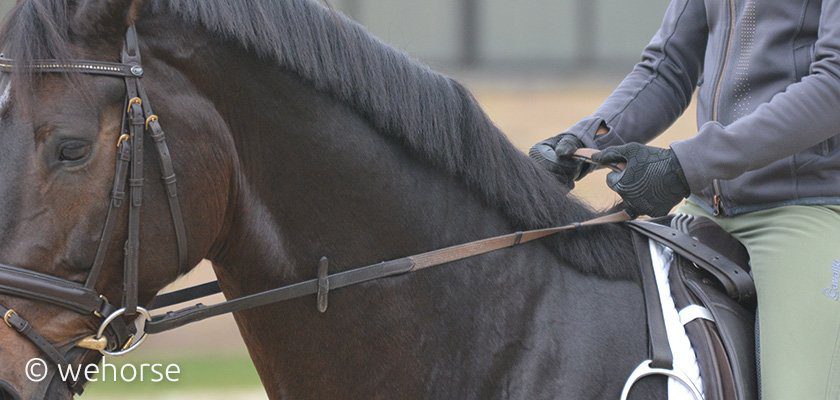
2 – You need your hands to stay in balance
In jumping, as well as in dressage, many riders use their hands to keep their balance. An independent seat is a prerequisite for good riding, and means you can give your weight, leg and hand aids independently from one another, essential for your hands to be able to remain still!
It might sound paradoxical but, if you want to improve your hand position, start by focusing on your seat! The first step is to sit in the saddle and develop a good feeling for the movement of your horse. You will see that if you are able to control your seat, improving your hand position will be way easier! If you want to see more on how to improve your seat, take a look at these dedicated blog articles!
3 – Your hands move backwards
We often see riders riding their horses with backward hands in response to a horse being too fast, too strong or in the apprehension of the horse being naughty. Nevertheless, we cannot say it enough- “it takes two to pull!“
If you are trying to develop a lighter contact with the mouth of your horse, short, brief action will be way more efficient! Physical instructor Eckart Meyners demonstrates how riding with air-filled plastic balls under the armpits can help you. It may sound like an unusual thing to do but by stimulating the fascia (or connective tissue) and muscles in the shoulder area, the feeling in your arms, as well as your posture, changes. This, in turn, changes the way the reins are used, the elevation of the upper body and head as well as a positive effect on the breathing of the riders. Because the shoulder area and the legs work in a corresponding manner the Franklin Balls also influence the leg aids. The horses travel forward more willingly and with suppleness.
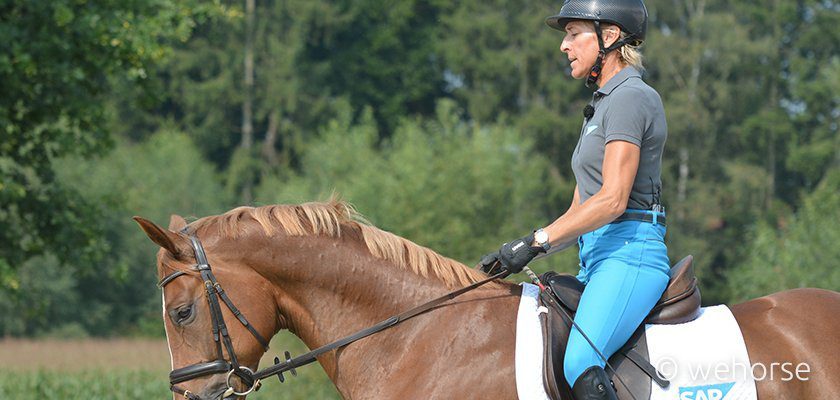
Why are fine aids so crucial?
Once you are able to carry your hands in the correct position and you’ve developed a soft and steady contact to the bit, you can start working on refining your aids. Riding your horse with fine aids means that by giving the lightest signals, you are able to obtain the appropriate response to your requests.
It sounds great, but it takes time and practice! Uta Gräf shows you how to get started with fine riding. Our tip is to be patient and approach your training one step after the other!

